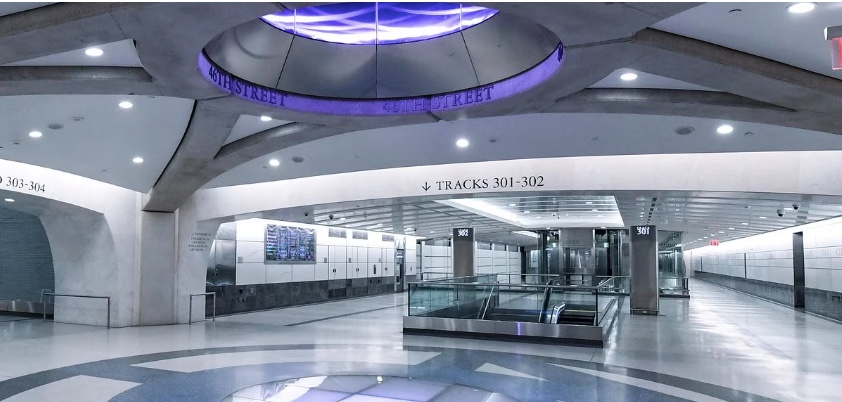The $11.1 billion East Side Access project in New York, which was first projected over half a century ago at a much lower cost estimate, has finally completed after numerous setbacks and expenditures.
The 3.5-mile tunnel from Queens to Manhattan provides a crucial second terminus for the Long Island Rail Road (LIRR), connecting to a wide range of transit lines and to Grand Central station. (Previously, Penn Station, on Manhattan’s West Side, was the LIRR’s only Midtown-Manhattan terminal, an inconvenience for all those commuters still needing to get to the East Side.) Transporting more than 300,000 passengers daily, the LIRR claims to be the busiest commuter railroad in North America, and it’s estimated that the linkage will reduce commute times by up to 40 minutes for many riders. MTA officials expect 160,000 passengers per day to use the connection to Grand Central.
From an operational standpoint, the project’s benefits are clear. However, the project’s execution was far from efficient. An investigation by the New York Times in 2017 uncovered that the cost of constructing the LIRR was seven times greater than similar projects globally, it is the costliest transit project, largely due to outdated labor regulations that increased the size of work teams and inflated budgets.
Official preplanning began in 1998 and construction finally started in 2001, with an expected eight-year time line and a $2.1 billion price tag. Now, more than two decades and an extra $9 billion later, the project has had its official ribbon cutting.
Current Metropolitan Transit Authority (MTA) chair and CEO Janno Lieber has been leading the project since 2017, a full eight years after its anticipated completion. During the opening ceremony, he didn’t mince words about the project’s tortured path. “When I took over as president of MTA C&D, the construction operation at MTA, the project was a hot mess,” said Lieber. “We tore it apart, we put it back together again. We said never again are we going to let the schedule slip. We hired a new team and said, ‘No schedule slippage, get it done.’ And you know what? We delivered.”
Cost overruns and delays are nothing new for American public transit projects. In San Francisco, the $1.9 billion Central Subway project began its planning in the 1980s, and after more than a dozen years of construction, service finally began earlier this year, five years later than expected. And in Boston, the burial of the Central Artery highway, a mega-project known as the Big Dig, dragged on nine years past its original expected completion date, and ended up costing about $12 billion more than anticipated—a figure that rises to nearly $20 billion when interest is taken into account.
While it is important to recognize the many advantages and improvements brought by the new terminal, its tumultuous past must not be overlooked. The new station, adorned with public artworks by Yayoi Kusama and Kiki Smith, offers a valuable lesson for future transit planners. It serves as a striking reminder of the exorbitant costs and delays that can occur in construction projects of this magnitude.
Ironically, even though the project has been officially inaugurated, with honorary golden tickets issued to the first train’s riders, service isn’t actually starting for another three weeks. “I’m going to call that a grace period,” Lieber said at the opening ceremony. Whatever you want to call it, it’s just part of the delay-ridden process of building public-transit infrastructure in the U.S.

